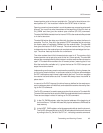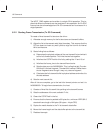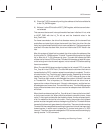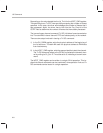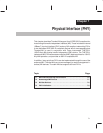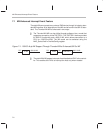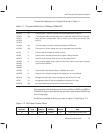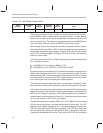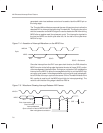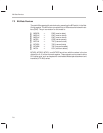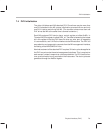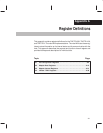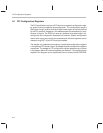
MII-Enhanced Interrupt Event Feature
7-5
Physical Interface (PHY)
PHY interrupt function. The INTEN bit is used to enable and disable the PHY
interrupt function. Setting the INTEN bit enables the PHY internal event sys-
tem to generate interrupts; clearing the INTEN bit disables the PHY from gen-
erating interrupts. Interrupts from the PHY are usually generated upon a
change in status that requires an interrupt indication.
Typical interrupt-generating events are shown in Table 7–2:
Table 7–2. Possible Sources of MII Event Interrupts
Name Function
Link Interrupt generated when the last read value is different from
the current state of the link, or different from the latched link
fail value if the link went OK-FAIL-OK with no register read in
between.
TxJabber Interrupt generated when the JABBER bit is changed from a
0 to a 1.
Remote fault Interrupt generated when the remote fault (RFLT) bit is
changed from a 0 to a 1.
Autonegotiation
complete
Interrupt generated when the autonegotiation complete
(AUTOCMPLT) bit is changed from a 0 to a 1.
Other event
Other events that may require the management information
base (MIB) statistics updated if a counter has reached its half-
way point. These counters should clear when read. This ac-
tion also disables the counter event function.
The design of the interrupt-generating logic in the PHY should minimize the
number of interrupts generated so that overall system performance is not im-
pacted. To achieve this, the events that cause an interrupt are detected by
change and not by absolute value. The host, when interrupted, reads the PHY
generic status register, followed by the PHY specific status register. This clears
the interrupt, as well as clearing the bits that needs to be counted in the MIB.
There is only one deviation from this behavior associated with the LINK bit.
This bit needs to inform the host of a change in link status if the last read value
was different than the current value. With the exception of LINK=FALSE dur-
ing a LINK=TRUE condition, this condition is latched by the PHY and held until
the host reads the link fail condition. Since the TxJabber, RemoteFault, and
XtalOk conditions are either counted or start a host recovery process, they
need only cause an event when they are first set. The JABBER bit should be
cleared on the read that reads this bit as a 1, otherwise the next interrupt will
count this set bit, corrupting the MIB statistics.
The 802.3u standard provides for communication with the PMI via the two
management interface MII pins: MDIO and MDCLK. The MDCLK signal is



